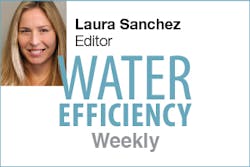At times clean water can mean the difference between life and death—especially for inhabitants of developing nations. And today this issue has become a reality in developed countries as well, as aging infrastructure fails.
A water filter developed by Liquidity Nanotech, a California-based start-up, aims to bring clean drinking water to the world—first by establishing their water bottle insert concept within domestic markets and later, to less developed parts of the globe.
Naked Filter, the introductory filter version designed for mainstream consumers, attaches to a plastic water bottle. Its membrane offers water filtration that eliminates 99.9999% of bacteria and other contaminants straight from a water bottle. This capability offers insight into the potential global impact of the filtration technology and into why the company spent 10 years developing an electro-spinning, 3D-printing production process: it’s exciting technology.
A membrane, made up of a mesh of intersecting nanofibers, surrounds an activated carbon core. The electrospun nanofibers are made of a polymer pulled into a nanometer-scale fiber using an electrical field. They are layered to form an elaborate, web-like filter structure that traps bacteria, protozoan cysts, E. coli, Salmonella, SARS, and norovirus as well as any particle bigger than 0.2 microns in diameter. Additionally, the carbon core filters out chlorine to improve the water’s taste and odor.
“The process begins with liquid polymer and a collector plate. Voltage is applied to the polymer and plate, which creates a pull to draw the liquid polymer out of its container toward the plate. As the polymer travels, it becomes increasingly thin. So thin, in fact, that at some point, air resistance actually begins to influence the flow of the liquid, causing the now-thin polymer to become convoluted as it falls onto the collector plate. During the trip, the polymer solution also converts to a solid. The resulting pattern is a 3D mat of a seemingly random, extremely thin fiber array,” writes Sam O’Keefe for TechCrunch.
Similar size-exclusion membrane technology has been used for decades to filter water for applications in the pharmaceutical industry but this is the first time the concept has been applied to consumer products.
It makes one wonder what other uses there might be for this filtration innovation. Perhaps one day it will contribute to water treatment in reuse facilities or will help eliminate harmful contaminants from wastewater.
What applications can you imagine?
